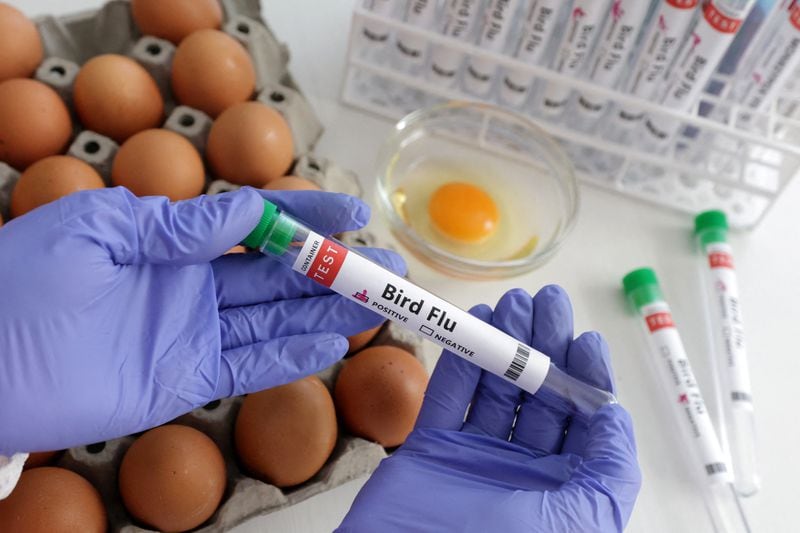Based on preliminary findings from this outbreak, the source of infection in cats is not the same virus that has sickened birds in recent weeks.
This Monday, the Veterinary Director of Poland announced that at least nine cats have died infected with the avian influenza H5N1 subtype a figure which, this Wednesday, had risen to 16. The unfortunate news came as scientists investigated an unusual cluster of illnesses that have been affecting dozens of cats across the country for the past two weeks.
There World Health Organization (WHO) indicates that influenza or bird flu is an infectious disease that mainly affects birds.
According to reports, affected animals suffered neurological and respiratory symptoms, including seizures and difficulty breathing . According to Paulina Grzelakowska, director of the Tri-City Veterinary Clinic in Gdańsk, northern Poland, the disease appears suddenly and progresses very quickly.
Death of cats from bird flu raises concern over possible infections in humans
“Animals die in a short time” said to TVN24 station adding that “cats of all ages are affected, purebred and mixed, those kept indoors and outdoors, those vaccinated against infectious diseases and those who have not been vaccinated.”
The General Veterinary Inspectorate has declared that Of the 11 samples tested so far, nine have tested positive for H5N1 avian influenza, and that the positive samples involved cats from three different cities: Poznan, Tri-Cities and Lublin, places separated by distances of hundreds of kilometers.
He US Centers for Disease Control and Prevention (CDC) points out that although it is not common for people to be infected directly by animals, sporadic cases have been reported in humans.

Although further tests are underway to characterize the virus, preliminary results suggest the source is not the same H5N1 virus that has sickened seagulls in recent weeks raising fears of possible human infections, as reports of infected mammals continue to rise.
Following the deaths of the cats, the Polish General Veterinary Inspectorate has asked all cat owners to take precautions to prevent the spread of the disease, while continuing to collect data and information to find the source.
“Work is underway to establish a protocol for monitoring the disease in cats in order to collect more detailed data on its evolution and onset. The source of the infection has not yet been identified,” they said in a statement.
After a meeting, the veterinary director advised owners to keep their cats indoors if possible to avoid contact between cats and wild animals , including birds. Take other precautions too, such as keeping cats away from outdoor shoes and feeding them only from known sources.
Concerns were first expressed on June 18 when a veterinarian in western Poland reported the death of a cat suffering from respiratory and neurological symptoms. From at least 70 suspected cases have been identified across the country, according to figures released last week. It is not yet known whether any cases of infection have been the result of cat-to-cat transmission.
Reports from Poland come as mammals infected with bird flu continue to spread around the world, with mass deaths of seals and sea lions reported in Russia and the Americas and dozens of foxes, skunks, dolphins, raccoons scrubbers, cats, ferrets and other mammals which they were also infected.

Dr Sylvie Briand, a WHO official, said in February: “The global situation of the H5N1 virus is concerning given the widespread spread of the virus in birds around the world and the increase in reported cases in mammals, including humans.”
Human cases of H5N1 have been detected in the UK, USA, Cambodia, Ecuador and Chile. The European Center for Disease Prevention and Control (ECDC) published a guide for hospitals to improve monitoring of patients with severe avian influenza infections.
“Transmission to humans cannot be excluded when avian influenza circulates in wild birds and mammals and people are directly exposed without wearing protective equipment,” the ECDC said.
Avian flu in Chile
In March 2023, the Ministry of Health (Minsal) announced the detection of the first human case of avian flu in Chile, reported in the north of the country, and corresponding to a 53-year-old man affected by a photo of severe flu.
From the Minsal they reported that the health protocols established for the management of this disease have been activated and the corresponding tests have been carried out for analysis by the Institute of Public Health (ISP), which has confirmed that it is avian flu.
The H5N1 virus or “bird flu” is a virus that can be transmitted from birds or marine mammals to humans, but there are no known cases of human-to-human transmission.
The Ministry of Health has asked citizens not to handle sick or dead birds or mammals and urges poultry workers to follow relevant safety protocols and get seasonal flu shots.
What are the symptoms of bird flu like the one detected in Chile?
According to US Centers for Disease Control and Prevention. , Although avian influenza A viruses do not generally cause human infection, very sporadic cases of human infection with these viruses have been reported.
Human illnesses caused by avian influenza virus infections vary in severity, ranging from asymptomatic or mild cases to severe illness resulting in death. Asian lineage H7N9 virus And Asian lineage H5N1 virus highly pathogenic avian influenza have been responsible for the majority of human cases of avian influenza virus worldwide to date, including the most severe illnesses and the illnesses with the highest mortality.
Reported signs and symptoms of avian influenza virus infections in humans range from asymptomatic to mild cases, including: red eyes (conjunctivitis), mild upper respiratory tract symptoms.
In more severe cases, symptoms may include: pneumonia requiring hospitalization, including fever (temperature of 37.8°C or higher), feeling feverish, cough, sore throat, runny or runny nose, aches muscle or body, headaches, fatigue, shortness of breath or difficulty breathing.
What to do with a bird flu patient?
According to the CDC, people who become ill within 10 days of exposure to infected birds should self-isolate at home and away from household members and they should not come to work or school until it is confirmed that they do not have a bird flu virus infection and are cured.
Source: Latercera
I am David Jack and I have been working in the news industry for over 10 years. As an experienced journalist, I specialize in covering sports news with a focus on golf. My articles have been published by some of the most respected publications in the world including The New York Times and Sports Illustrated.


